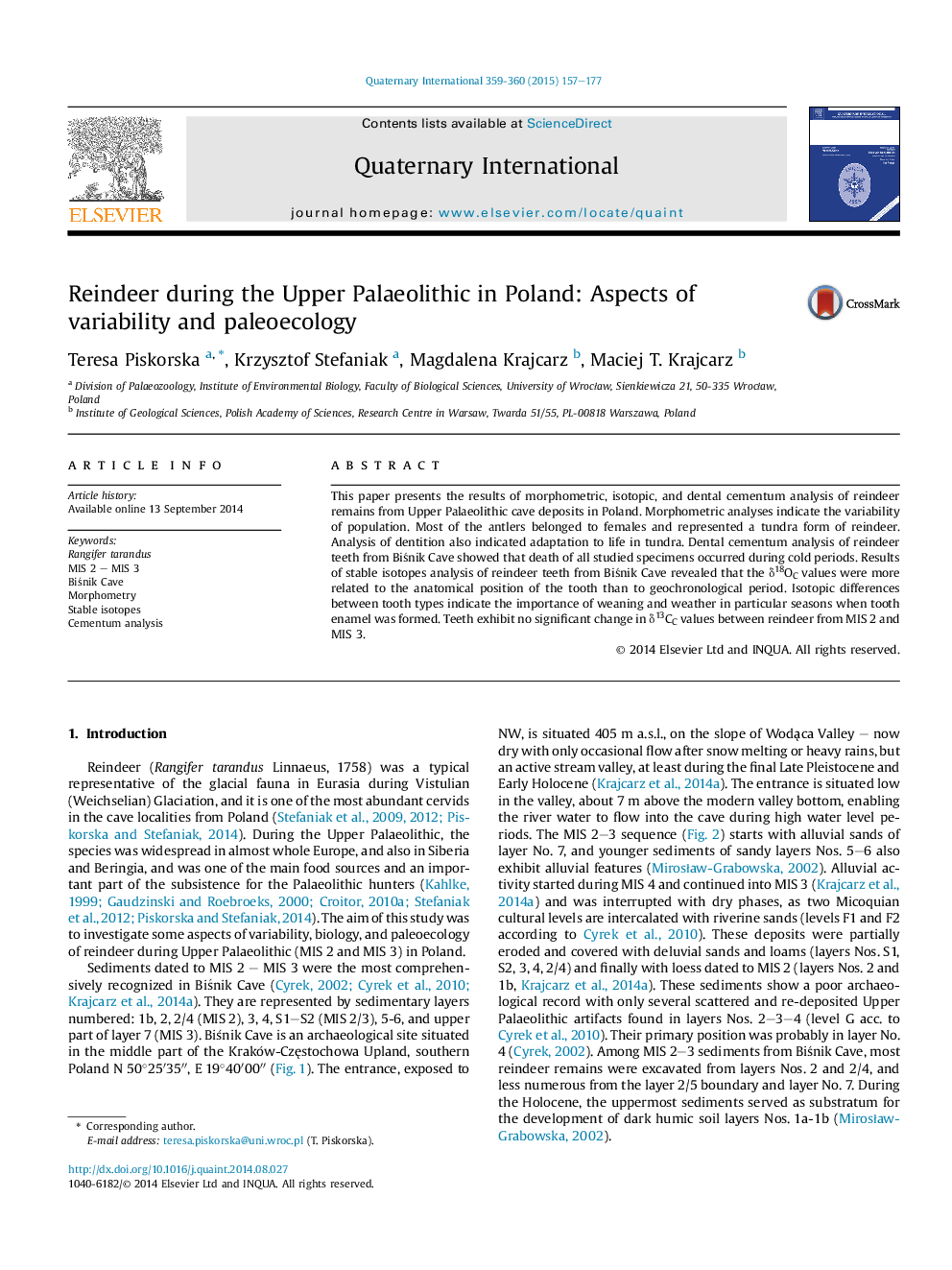| Article ID | Journal | Published Year | Pages | File Type |
|---|---|---|---|---|
| 1040978 | Quaternary International | 2015 | 21 Pages |
This paper presents the results of morphometric, isotopic, and dental cementum analysis of reindeer remains from Upper Palaeolithic cave deposits in Poland. Morphometric analyses indicate the variability of population. Most of the antlers belonged to females and represented a tundra form of reindeer. Analysis of dentition also indicated adaptation to life in tundra. Dental cementum analysis of reindeer teeth from Biśnik Cave showed that death of all studied specimens occurred during cold periods. Results of stable isotopes analysis of reindeer teeth from Biśnik Cave revealed that the δ18OC values were more related to the anatomical position of the tooth than to geochronological period. Isotopic differences between tooth types indicate the importance of weaning and weather in particular seasons when tooth enamel was formed. Teeth exhibit no significant change in δ13CC values between reindeer from MIS 2 and MIS 3.
